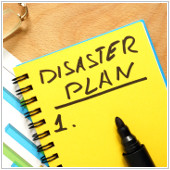 Facebook users woke up to a nightmare when they heard that the social media giant and associated app developers were selling their sensitive data to companies, like Cambridge Analytica, without their consent. So if you’re concerned about being one of the 50 million users whose data have already been sold, you should check out the following 3 tips.
Facebook users woke up to a nightmare when they heard that the social media giant and associated app developers were selling their sensitive data to companies, like Cambridge Analytica, without their consent. So if you’re concerned about being one of the 50 million users whose data have already been sold, you should check out the following 3 tips.
Download your Facebook data
The thought of a complete stranger going through your account is pretty disturbing. Yet, you’re probably curious about the amount of information you uploaded to your social media sites over the years. Fortunately, Facebook allows you to download a copy of all your data. You simply have to log in to its web version and…
- On the site’s main navigation, click on the down button right next to the Quick Help icon
- A menu will pop up and you’ll find Settings right above the Log Out option
- Click on Settings and you’ll automatically be redirected to General
- Within the General page, press Download a copy of your Facebook Data
- It will redirect you to a different page where you’ll need to press Start My Archive button to proceed with the download process
Once that’s done, you’ll be able to see an archive of all your Facebook activity, such as the statuses you’ve posted, messages you’ve sent, and ads you’ve clicked on.
Change your privacy settings
After going through all your data, you might realize that everything you shared is harmless. But, that doesn’t mean it won’t end up in the hands of cybercriminals who can use it against you.
We suggest going back to the Settings page and clicking on Privacy. That’s where you can modify whether you want your posts to be seen by the public or only by your friends. You can even control who’s allowed to send you friend requests, view your friends list, and most importantly, decide whether search engines are allowed to link to your profile.
Check or delete apps
You know those personality quizzes that you and your friends always had a ball answering? Apparently, Cambridge Analytica gathered all the responses from one of those app developers. Luckily, you can stop them from further accessing your profile. In Settings, click on Apps to see all the apps linked to your profile. Beside each one, you can choose Edit Settings to review its authorizations or click Remove to completely get rid of it.
Your recent love-hate relationship with Facebook has you second-guessing. If you want to take data security up a notch, we can always provide more tips and tools, and even assess your current level of security. Just give us a call and we’ll take care of your privacy so you don’t wind up breaking up with your favorite social media site.



 Have you had to deal with security issues in the past year? Brace yourself, as there are more to come. For this reason, security experts have become indispensable members of society, who guard tech-dependent individuals and businesses against malicious attacks that pose threats to their privacy and livelihood. As you ring in the new year, make sure you’re well armed against the following predicted cyber-crimes.
Have you had to deal with security issues in the past year? Brace yourself, as there are more to come. For this reason, security experts have become indispensable members of society, who guard tech-dependent individuals and businesses against malicious attacks that pose threats to their privacy and livelihood. As you ring in the new year, make sure you’re well armed against the following predicted cyber-crimes.


 Natural disasters have increased exponentially in the last few years – something that has resulted in a number of small and medium-sized business owners turning to business interruption insurance for protection. Covering many scenarios that regular business insurance simply ignores, adequate protection can be the make-or-break factor when it comes to surviving a natural or manmade catastrophe.
Natural disasters have increased exponentially in the last few years – something that has resulted in a number of small and medium-sized business owners turning to business interruption insurance for protection. Covering many scenarios that regular business insurance simply ignores, adequate protection can be the make-or-break factor when it comes to surviving a natural or manmade catastrophe.